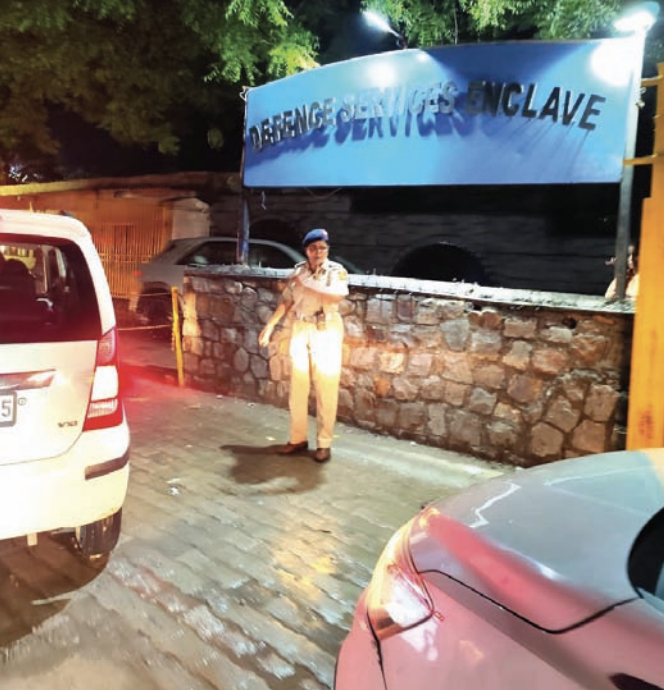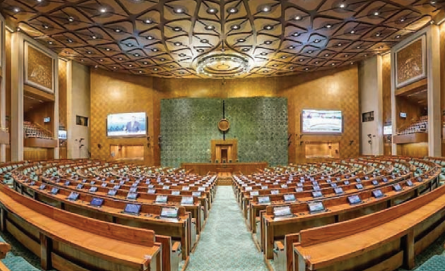Delhi High Court’s remark that Centre must expedite decision on Sainik Farms regularisation gives
hope to residents though some of them feel the legal tag may not be in their best interests
Ask a resident of Sainik Farms what is on top of their wish list and pat comes the answer: ‘Regularisation’. This is because they are frustrated with the court-mandated ban on construction and threat of colony’s demolition due to it being ‘unauthorised’, making their coveted properties dirt cheap and having the cops harass them even to make minor repairs even as palatial bungalows come up covertly. At this point, let’s see how the how the situation evolved into what it is. It all started in March, 2000 Sometime in March, 2000, one Rajeev Malhotra purchased an 800 square yard plot in Ashoka Avenue. When he set upon the task of building a house there, some MCD and police officials demanded money to look the other way. Although he was forced to oblige them, as he later told Delhi High Court, in October, 2000, a team led by SHO, Ambedkar Nagar (PS Neb Sarai only came into being in 2007-8 when it was unveiled by then DCP, South HGS Dhaliwal, now Special Commissioner, Special Cell) demolished the structure. To get to the bottom of the sordid saga, the court set up a probe committee, which found no merit in the defence mounted by two accused MCD officials demolishing all constructions in the colony. “Only cosmetic demolitions of properties were made without touching the main structures,” the court observed. The duo was fined and jailed for committing contempt of court, with respect to the court’s order made on November 3, 1997 in WP(C) no. 7441 of 1993 which baned constructions in unauthorized colonies in the capital. This case (Rajeev Malhotra vs Union of India & Others; WP(C) no. 6734 of 2000) is considered the genesis of the judicial bar on constructions in Sainik Farms. It was subsequently reinforced by another case [WP(C) 1145/2014] filed by an NGO. The ‘Affluent Colony’ road block In 2012, the then Delhi CM Sheila Dikshit managed to convince the Centre to allow the regularization of 917 unauthorised colonies, but Sainik Farms did not make the cut, despite the expectation that ‘affluent colonies’ would be included. Before that, in 2008, ahead of the 2008 assembly polls, Delhi govt issued provisional regularisation certificates (PRCs) to 1,218 unauthorised colonies. Dikshit had then promised to regularise all colonies if the Congress seized power for the third term, but it never happened. Prior to this, in 2007, the Union Urban Development Ministry decided against legalizing ‘high-profile’ unauthorised colonies like Sainik Farms, Anantram Dairy and Mahendru Enclave as planned, since they were inhabited by ‘affluent people’. After the second term of the Modi govt began, hopes again arose that the issue may be resolved. But the National Capital Territory of Delhi (Recognition of Property Rights of Residents in Unauthorised Colonies) Bill, 2019, moved in Lok Sabha in November, 2019 excluded 69 ‘affluent colonies’. In 2021, Delhi High Court dismissed a petition seeking regularisation of unauthorised colonies left out by the Centre, saying legalisation of such colonies was meant for the poor and downtrodden and not for the rich class. A ray of hope from court? In May, 2023, the high court came up with an interesting order while hearing pleas by some residents of Sainik Farms seeking permission for undertaking repairs. It said: “Authorities cannot keep people living in unauthorised colonies, which came up ‘right under your nose’, in ‘limbo’ and should decide on their regularisation as huge money was spent on constructing them. The court also said that be it affluent or non-affluent, unauthorised colonies are ultimately unauthorised, and it is for the govt and not courts to decide whether to regularise them or not. Some residents like it this way Scores of residents of Sainik Farms say they don’t care much for the the legal status, perhaps making them the only unauthorised colony which is not so gung-ho about the regularised tag. “Regularisation will come with a hefty penalty and builder mafia. As price of land skyrockets, many would like to cash in the opportunity by putting their properties on sale, especially those who bought a land here as an investment. Soon multiple apartments would replace the low-rise buildings. It will add to chaos,” says Aashika Jain, a resident. “Regularisation will only bring crowd and chaos with it,” said Ankit Singh, residing in Forest Lane, adding, “Instead of getting regularisation, which most believe is just a thing on paper, the residents want the ban on new construction lifted from Sainik Farms. The police come immediately to inquire even when we are trying to paint our houses whie taking crores from those building houses illegally. We want that to go away,” “In other unauthorised colonies, civic amenities are lacking and construction is haphazard. But Sainik Farms has avoided it, largely because of its residents with deep pockets. It’s the only area that offers you exquisite, super spacious farmhouses in South Delhi. If not here, you will have to move towards the outskirts for this kind of space,” said a real estate dealer, on the condition of anonymity. He said his father bought a farmhouse in the colony 25 years ago. “Back then, the area was not as ‘developed and desired’ as it is today. Electricity and water were a huge problem. While we still rely on private water tankers, there is an electricity connection in every house now,” he says. “Moreover, once it is regularised, residents living on main roads will have to sacrifice a part of their own land to make space for wider roads,” he added.



